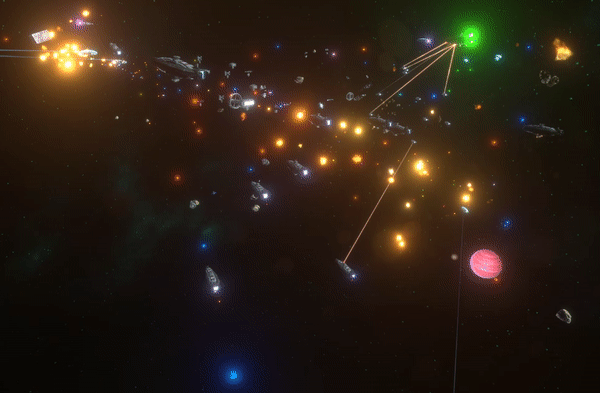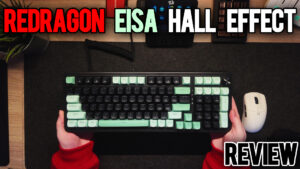Stellar Warfare Review: Command & Conquer Among the Stars

If you’ve ever wondered what Command & Conquer would feel like in outer space, Stellar Warfare might be your answer. This indie real-time strategy (RTS) game boldly mashes up classic base-building with starship fleet battles. Developed largely by a single person as a passion project, it wears its inspirations on its sleeve – from the resource wars of Red Alert to the 3D combat of Homeworld. The result is a game that’s equal parts nostalgic and novel, inviting you to relive old-school RTS thrills in a new galactic playground. But does Stellar Warfare truly capture that classic magic, or is it lost in space? Let’s dive into the starfield and find out.
Nostalgic Space RTS Vibes 🚀

Stellar Warfare immediately hits you with a dose of RTS nostalgia, and not by accident. The developer set out to create “a Homeworld-like game but with base building and ship customization,” expressly drawing inspiration from RTS legends like Red Alert, Homeworld, and Supreme Commander. Fire up the game and you’ll feel it – from the top-down view to the resource harvesting and power plants, it’s like someone launched your 90s RTS memories into orbit. One player even remarked that Stellar Warfare “reminds me of a classic Command and Conquer style in space,” and that really sums up the vibe. If you spent your youth ordering Mammoth Tanks around Tiberium fields, the base-building here will feel comfortingly familiar (only now your “ore refineries” might be asteroid miners floating in a void).
Base construction and resource management follow a classic formula: build refineries for income, power plants for energy, and defensive turrets to protect your turf. The twist is you’re doing this on scattered space platforms instead of a 2D map, but otherwise it’s pleasantly old-school. In fact, Stellar Warfare even brings back the classic RTS loot crate concept – yes, really. Enemies sometimes drop “loot boxes,” but don’t panic: these are the good kind that cost nothing. As one excited fan explains, it’s “literally a classic loot box system similar to that of the original Command & Conquer Red Alert where you would find boxes on the map – except here you destroy enemy ships for a chance to drop loot, and those pickups give you upgrades and unlock more ship designs.” In other words, blowing stuff up yields bonus goodies for your army, just like the old days. It’s a cheeky nod to vintage RTS design, and frankly, it works – who doesn’t enjoy a free power-up mid-battle?
Building Bases & Managing Fleets in the Void

Of course, Stellar Warfare isn’t just a C&C clone in space – it adds some unique mechanics to the mix. The biggest standout is real-time fleet customization and management. Instead of pre-defined unit types, you get to design your own ships from a huge array of parts. There are over 60 ship frames and dozens of weapons and modules, yielding “over a million possible ship configurations already” according to the developer. Want a speedy glass-cannon frigate armed with laser batteries? Or a lumbering capital ship stacked with shields and long-range missiles? Go for it. Stellar Warfare gives you the LEGO box of spaceship parts and says, “build whatever death machine you want.” It’s a tinkerer’s dream and adds a layer of long-term progression as you unlock more tech via loot drops.
In practice, commanding your custom fleet in battle is both exhilarating and a little chaotic. The game takes place in full 3D space with complete freedom of movement, so battles aren’t neatly confined to a plane – ships can swoop above or below targets, and firefights erupt from all angles. When the lasers and missiles start flying, it makes for grand, cinematic space battles that can look stunning. The screen lights up with neon projectiles, explosions, and engine trails; one moment you’re admiring the view of a distant planet as a backdrop, the next moment everything is erupting into a gorgeous lightshow of destruction. “Just watching the spectacle of all the flying cannon, missiles and beams is entertaining,” one player noted, praising the game’s flashy combat effects. For an indie title, the visual presentation holds its own – ships are detailed enough and the pew-pew of space combat is satisfyingly vibrant.
The 3D Chaos Factor

That said, the freedom and complexity come at a cost. With so many ship variants and weapons in play, it can be hard to tell what’s going on strategically. Unlike traditional RTS games where each unit has a clear role and silhouette, here “at any given moment, any ship type can theoretically have any capabilities,” one player pointed out. In Command & Conquer, you always knew what a tank or an Orca could do. In Stellar Warfare, you might have no clue what a group of enemy ships is armed with until the shooting starts – they could be fitted for anti-fighter flak, long-range artillery, or something else entirely. As that player put it, “I don’t know what I’ll face at any given time… There is no rock-paper-scissors formula because it can’t exist here.”
This unpredictability means battles sometimes devolve into brute-force slugfests. In fact, a cheeky reviewer quipped that no fancy tactics beat just building a “massive death blob” of ships and steamrolling the enemy. If you can slap every weapon onto a giant blob fleet, why bother with finesse, right? This highlights both a design double-edged sword: the ship customization is fun and flexible, but it also muddies the clarity of unit counters and can reward blob tactics over clever micromanagement.
The user interface and controls can likewise be overwhelming at first. You’re juggling base construction, resource rates, and multiple fleets across a fully rotatable 3D camera. Spatial awareness is a challenge – it’s easy to lose tiny fighter ships amid the galactic backdrop, or to misjudge distances when rotating the view. As one critic noted, Stellar Warfare has “too much going on… it gets way too confusing to play. Sometimes you can’t see where your ships are, it’s very hard to distinguish between different types of spaceships or structures, and the pathfinding suffers a lot because of the 3D environment.” On the bright side, the developers are aware of these issues and have been adding quality-of-life improvements. They even patched in a “tactical pause” feature so you can freeze single-player games and issue commands at your leisure. For those of us who aren’t RTS micromanagement savants, the ability to pause and plan is a godsend.
Solo Modes: Short Campaigns & Endless Survival

For those who prefer solo play, Stellar Warfare offers a handful of modes to keep you busy (at least for a while). The primary single-player component is a modest campaign – emphasis on modest. It features only a handful of missions (eight at the time of writing) and has a light narrative about a galaxy-wide event called “The Light” that plunged civilizations into chaos. The story is mostly an excuse to throw you into various battle scenarios. Don’t expect elaborate cutscenes or deep lore; as one reviewer observed, the missions are basically about “fighting enemies and breaking space blockades,” with only minimal story context provided.
It’s apparent that Stellar Warfare “is not supposed to be an utterly complex grand strategy game, but a simpler, wave-based one – and that’s OK!” In other words, the campaign isn’t trying to be StarCraft or Homeworld with epic narratives – it’s more like a prolonged tutorial or a sampler of game modes, there to give you a taste of fleet combat against AI before you hop into the sandbox. It can still be enjoyable (“fun if you know what to expect” as the same review said), but temper your expectations: this is more Red Alert-style skirmishes with brief mission briefs, not a 30-hour space opera.
Beyond the campaign, single-player skirmish mode lets you set up custom battles against AI opponents – pretty standard RTS fare. More unique is the Wave Defense (survival) mode, which you can tackle solo or co-op. This mode feels almost like a tower defense/RTS hybrid: you build up a base and fleet, then try to withstand successive waves of enemy attackers that grow stronger over time. Some players noted that Stellar Warfare “plays more like a wave-based tower defence game than an RTS” in this mode, since you end up erecting lots of defensive structures and surviving as long as possible rather than rushing an enemy base.
Multiplayer & Co-Op: Better With Friends
The heart of any classic RTS is pitting your strategies against real humans, and Stellar Warfare does offer a mix of multiplayer modes – though the experience can be a bit hit-or-miss. You can jump into online skirmishes (PvP) to test your fleet composition against other players. There’s even a quirky Battle Royale mode where multiple players face off until one fleet or base is left standing, which puts a chaotic spin on the usual 1v1 formula.
However, the reality depends heavily on player count, and Stellar Warfare is a niche indie game – meaning the online lobbies aren’t exactly overflowing. Finding an opponent via matchmaking can be difficult. As one reviewer noted frankly, “you’ll have a pretty hard time finding other people to play with, so it’s better to stick with friends or go it alone” if you want a match.
The good news is that Stellar Warfare shines most in cooperative mode. The co-op Wave Defense is a blast when you bring along a buddy (or five). In fact, up to 8 players can team up in the survival mode, forming an impromptu fleet alliance against the AI onslaught. Few RTS games let that many people cooperate in one base-building brawl – imagine 8 commanders frantically fortifying one base and coordinating fleets to stem the tide of enemies. It’s chaotic, hilarious, and genuinely fun if everyone’s on voice chat yelling “Need more power here!” or “Help, my flank is collapsing!” The more players, the more extravagant the fireworks on screen.
Pros & Cons
Pros:
✅ Nostalgic classic RTS vibe with space twist
✅ Deep ship customization options
✅ Grand, cinematic 3D battles
✅ Fantastic co-op wave defense with up to 8 players
✅ Mod support and steady developer updates
Cons:
❌ Battles can devolve into messy slugfests
❌ UI and 3D camera can be confusing
❌ Campaign is short with minimal story
❌ Matchmaking lobbies often empty
Verdict

At the end of the day, Stellar Warfare succeeds in delivering exactly what it promises: a Command & Conquer-style RTS experience in a space setting. It’s not a revolutionary strategy game, and it has its share of rough edges, but it nails the core fun of building a base, amassing a fleet, and watching things go boom in spectacular fashion.
If you yearn for the days of classic RTS battles, can handle a bit of chaos, and don’t mind some rough edges, Stellar Warfare is absolutely worth a look – especially if you bring friends along for the ride.




